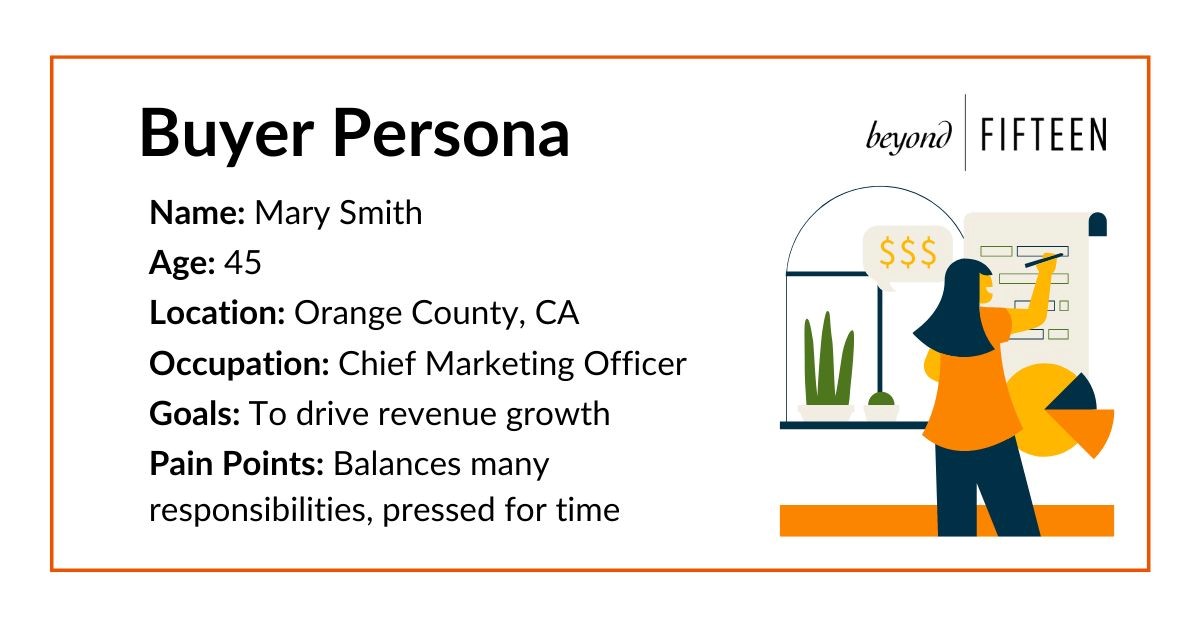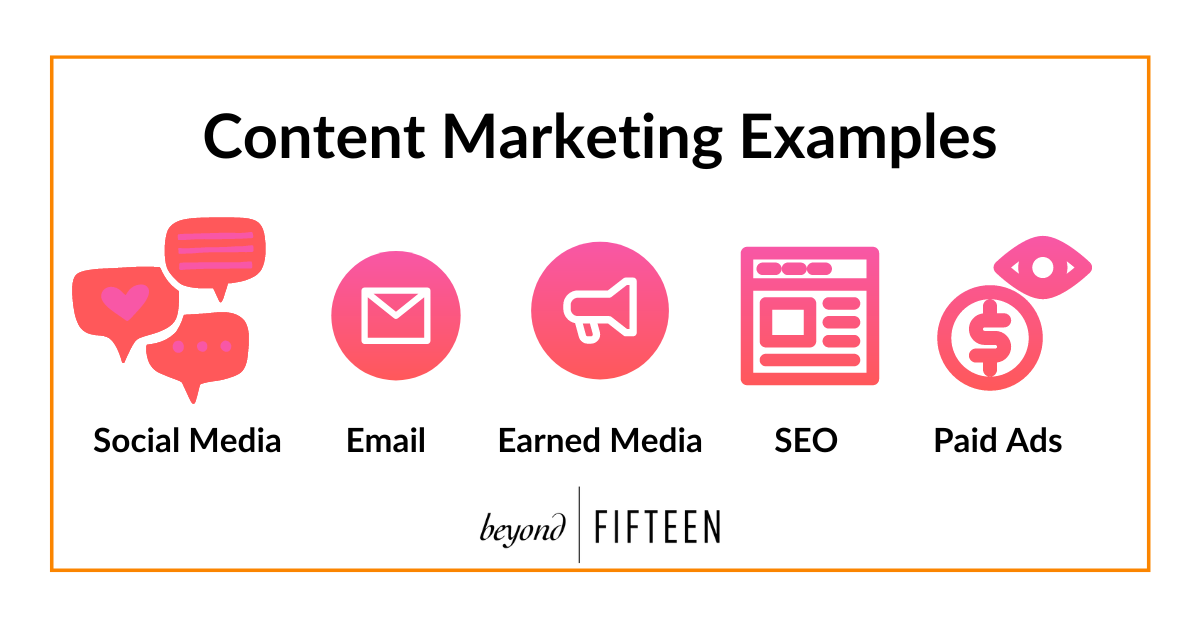Public relations (PR) as an industry has experienced a significant shift throughout recent years. What once was seen solely as a top–of–funnel activity focused on awareness and impressions, is now recognized for its diverse ability to support all aspects of the marketing funnel, including your lead generation campaign. In fact, 67% of companies report using lead generation as the sole metric to determine content success. With this in mind, it is extremely important to ensure your lead gen campaign is set up for success. Here are five key campaign elements to help turn potential customers and clients in the awareness phase into qualified leads.
1. Clear Lead Generation Campaign Target Audience Definition
The first step to any successful lead generation campaign is identifying exactly who you will be targeting. It’s incredibly important to capture this information correctly as the “who” is going to largely dictate the “what” and the “where,” meaning your strategy will be centered around content (the “what”) that resonates with this audience (the “who”) and the platforms and publications (the “where”) that they frequent. One of the fundamental ways many brands accomplish this is by developing what’s known as buyer personas. Buyer personas are essentially a depiction or visualization of your ideal customers or clients based on data and research. In addition to basic demographic information such as age, gender and location, these personas provide a detailed overview of many telling characteristics including the personas goals, values, pain points and challenges.
To begin building these buyer personas, or simply gaining a better understanding of your target audience, you’ll want to perform market research, competitor research and analyze existing client data to find answers to the following questions:
- What factors are most important to your ideal customer’s buying decisions?
- What social media platforms and publications do they visit?
- What specific pain points, related to your industry or niche, do they experience?
- What do they value in a brand?
With this information, you can develop a deep comprehension of your audience and create messages and strategies that resonate and drive leads.
2. Pillar content & Cluster Content
Today’s consumers are constantly being presented with more information, options and resources than ever before. With a relentless parade of product and brand mentions coming from seemingly every which way in the form of online advertisements, media placements and sponsored content, it’s no wonder consumers can become overwhelmed and inundated by messaging. From a PR perspective, this trend also lends insight as to why it’s so difficult to stand out among such fierce competition and effectively drive consumers past the awareness phase. One solution that is beneficial to both public relations professionals and consumers is the creation of pillar content.
In the realm of PR and content marketing, pillar content refers to comprehensive, high-quality content that provides valued information on a specific topic or subject. It can be divided into sub-topics and can support and inform the creation of related, smaller content pieces known as cluster content. Whereas pillar content is usually long-form and includes assets such as in-depth guides, e-books, whitepapers, webinars and case study collections, cluster content is generally shorter and includes formats such as blog posts, infographics, FAQs and individual case studies. Incorporating both types of content is a great way to boost Search Engine Optimization (SEO) efforts for your site and landing pages. This content provides valuable, deeply insightful information to consumers which empowers them to make educated buying decisions that align with their needs, wants and goals. On the other side of matters, as a business owner or professional, it helps to promote the unique selling points of your brand, validate your credibility, and ultimately, drive leads in an expedited fashion as consumers feel well-equipped and confident taking the next step.
3. Content marketing
While creating pillar content is a great start to your lead generation strategy, it may not be an effective strategy all on its own. Suffice it to say, it’s not enough to simply create the content and house it on your website, you need to actively reach out to your target market and let them know that the content exists. Some easy and effective ways to do so include:
- Distributing the content via your owned channels in the form of social media posts and marketing emails
- Securing earned media placements that drive readers to your owned content
- Using paid channels such as sponsored content and digital ads to promote the assets
- Optimizing your website and content for search to drive organic traffic
The more exposure your content receives, the more people you drive to your website, the higher chance you have of connecting and collecting that person’s information.
4. Customer Relationship Management
Good customer relationship management (CRM) is vital to maintaining your customer relationships as well as monitoring and tracking lead status. Once you’ve made an initial connection with a potential customer, you’ll want to store their relevant contact information and organize this data in a system that makes the most sense for your business model. A CRM serves as not only a central database for storing names and phone numbers, but also as a crucial tool for helping to vet and organize these leads as they move through the sales funnel. Whether your business uses lead scoring, a BANT framework or any other of the many methods to vet and qualify leads, you’ll surely want to track this information and assure it is easily accessible to any individuals on your team who fulfill functions in the areas of PR, marketing and sales. Through proper use of a CRM, you can ensure that your team is following up on active leads and inversely, not spending valuable time, money and resources focusing on leads who are not qualified or otherwise uninterested in your services at this time.
5. Retargeting Your Lead Generation Campaign
Research indicates that it takes as many as five to seven impressions for someone to remember your brand. This is where retargeting plays an integral role. Retargeting is a way to get in front of members of your target audience who have taken some form of meaningful action with your content such as visiting a page of your website, liking one of your social posts or interacting with a paid ad, but have yet to ultimately provide their information. By adding in additional touch points with these individuals, you can help nurture them with information suited for their current stage in the consumer journey and increase the likelihood of them becoming a lead.
While retargeting is normally introduced in the form of paid ads and makes use of pixels to track certain behaviors of those who engage with your owned channels, these efforts can also be employed from an organic standpoint. One way is through email marketing, where you can create drip campaigns to follow up with those who have already filled out a form or otherwise provided their contact info. You can nurture these leads with middle of funnel (MOFU) and bottom of funnel (BOFU) content to drive them to a desired call to action such as scheduling a product demo or speaking with a representative. Similarly, you can use your social media platforms as a way to distribute valuable content to educate and influence those who already follow your brand, but have yet to take the next steps in becoming a customer.
Ready to start driving leads for your business?
Are you looking to hire a PR agency that can assist your sales team in designing and executing targeted lead gen campaigns? There are a variety of strategies to choose from depending on your brand’s communication goals. If you’d like to learn more about how the experts at Beyond Fifteen can help, contact us today.


